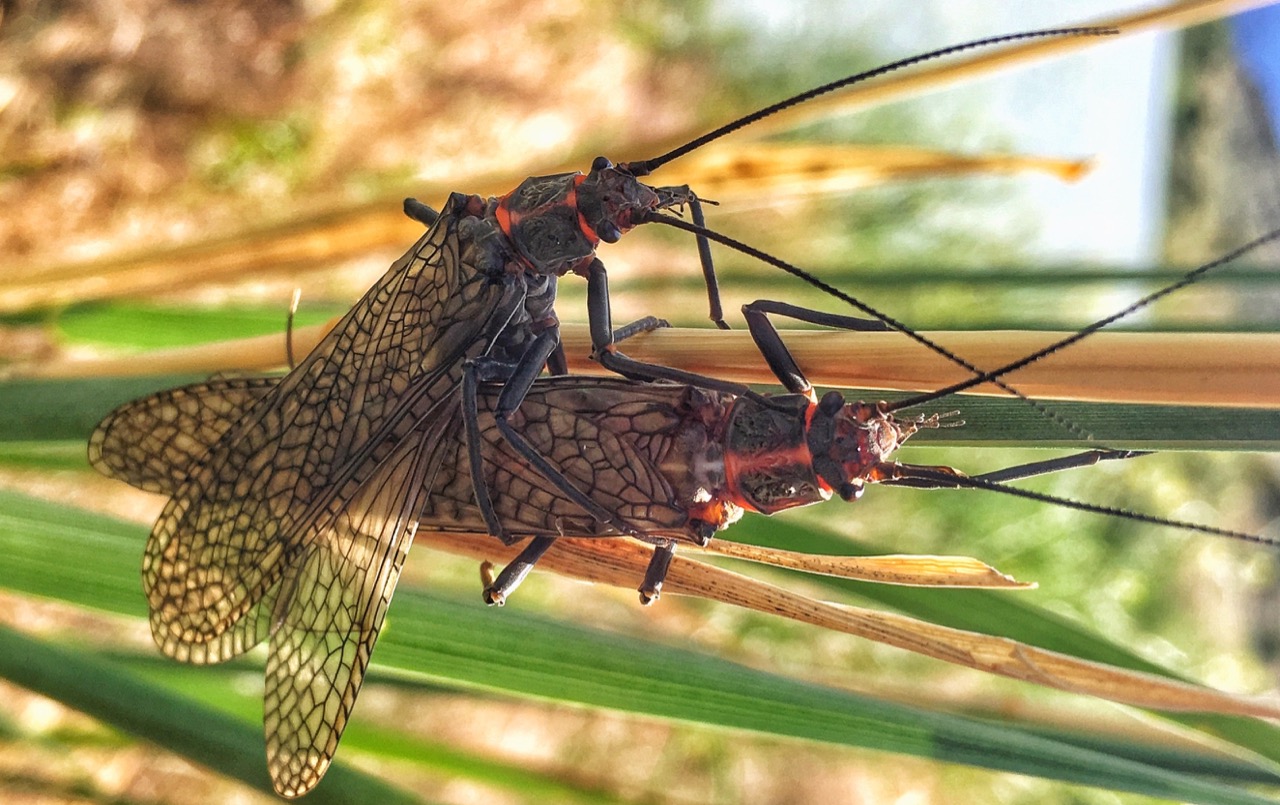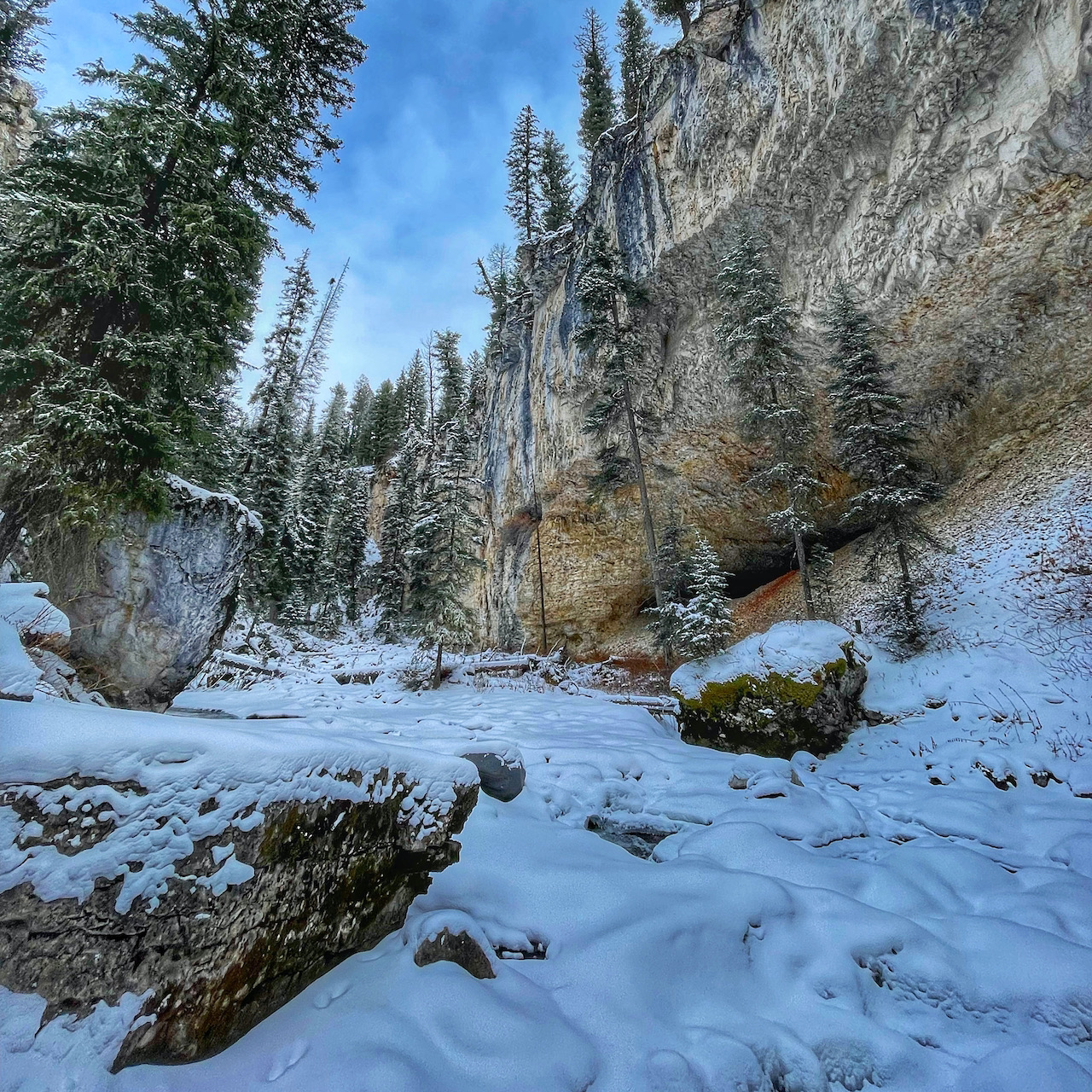Insects bug people. We all have had experiences on public lands where horseflies kept biting us, mosquitoes tried to drain us of every drop of blood and yellow jackets harasses and stung us. We come back dejected, itchy and sometimes swollen. I agree- days when bugs are bad can be awful. However, sometimes an encounter with an insect is the opposite, giving a day full of intrigue and wonder. For me, once such encounter occurred in Montana’s Paradise Valley.
I wasn’t expecting anything more than a short walk along the Yellowstone River. It was spring and I was rejoicing the fact the the sun had returned and the snow was finally gone. I wanted to bask in the warmth and listen to the sounds of the river, still bubbling over with the waters of the melt. Lazily meandering past rocky outcroppings and growing grasses, I was perfectly content and lost in the moment.
I stopped to take some pictures, as I am known to do. I was hoping to capture the plants along the riverbank swaying in the breeze on this perfect spring day. I knelt down to get the right angle, looked through my viewfinder and saw something move out of the corner of my eye. I set my camera down to get a better look and that is I saw them.
All around me, insects appeared to be dripping off of every plant in sight, but the one in front of me. The bugs were around two and a half inches long, squirming and shimmying up everything rooted in the ground. To say I was shocked is an understatement. I believe I exclaimed, to the air, “Wh-what are th…,” long pause, “…what. Umm. What the, but how? Hmm. Ok.”
The remark was greeted with as much acclaim as it was elegant and coherent.
The object of my confusion was the Giant Salmonfly, AKA Pteronarcys californica. Salmonfly, part of the Stonefly order of insects, easy to spot thanks to their large size, bright orange or red band behind the head and their wings, which contain dark veins .They are staples for the cutthroat trout of the area, helping to give the Yellowstone a great reputation in the world of anglers. Salmonfly are what makes areas like the Paradise Valley in Montana so famous and are why the region is widely know and coveted in fly fishing circles, a group which I know nothing about.
The Montana Field Guide shares that “in late-May to early July, adults are hatching and providing trout fisherman with exciting dry-fly fishing on the surface or underwater with large artificial nymphs. Adults are fairly weak fliers and are very conspicuous by their size and erratic flight over the river making them easy pickings for feeding trout or insectivrous birds. The Giant Salmonfly range in Montana only overlaps with one other potentially confusing species; the American Salmonfly, Pteronarcys dorsata which has been reported to occur in the Smith and Missouri River basins.”
Everyone who knows the river or fly fishing knows this.
To me, seeing a Salmonfly was Incredible. I was seeing a brand new creature. I was immediately intrigued, taking my time to analyze the masses, from the tops of the brush all the way down to the banks of the river, where they had emerged from their underwater armor. For the better part of an hour, I wandered around and watched, transfixed by this “new to me” discovery.
Later, I would learn that Salmonfly are called this because like their name sake, they have a consistent life cycle of three to four years, commencing with a final molt. For their last spring on Earth, the migrate toward the shoreline, and once the outside temperature falls, they emerge, shedding off their old homes for one last gasp of fun.
While the length of life for Salmonfly is typically 3 to 4 years, adults life above water is short. For just a few days to a few weeks, before they die, Salmonfly have just one job: pass down that DNA, baby!


For Salmonfly, like salmon, is to live long enough to mate and die. For the short mating season, male Salmonfly attract possible dates by drumming rocks or wood, or on Tindr. If all goes as planned, they will get to mate on the wings and live out the purpose of their lives. After what I assume is the bug equivalent of ghosting, the female Salmonfly lay the eggs on or above the water. The eggs separate and slowly sink to the bottom to hopefully begin the next generation. Like salmon, multiple “runs” may exist in any given river, allowing a Salmonfly hatch to potentially occur every year. Of course, one bad year can ruin it all.
Back on the bank of the Yellowstone, looking at this incredible event, I considered myself lucky. I had randomly stopped to stretch my legs and snap a picture, instead finding something completely new to me. In that moment, I remembered something I tend to forget when I am out on my adventures: I know and understand know a small part of nature.
Seeing the Salmonfly on the Yellowstone gave me one more layer to life in the region, and got me closer to understand the extremely complex and delicate ecosystem. Without Salmonfly here, the health and population of the fish would plummet. The fishing economy of the region would collapse and so would the balance of nature. The river valley as we know it would forever change.
The fragile ecosystem of the Yellowstone received some great news later in that year. A proposed mine on one of the tributaries in the region was not passed. Then legislation banning mining in the region was signed by Trump in early 2019. While this good news doesn’t stop the threat of irreversible climate change, it is a start, and a small victory for these giant Salmonfly.
If you’d like to see them, explore the Yellowstone River in late-May through early July. It is a pretty rad thing to see.
This post was written in one hour for my #NatureWritingChallenge, where this week’s topic was “What is a memorable insect encounter you have had on Public Lands?”
Want to join in on the fun? Read more about this challenge here.



